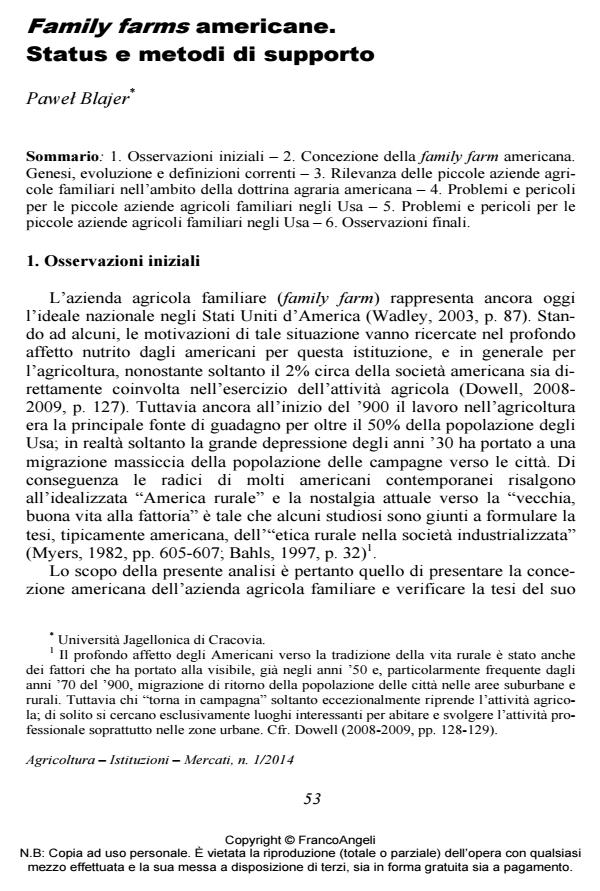Family farms americane. Status e metodi di supporto
Titolo Rivista AGRICOLTURA ISTITUZIONI MERCATI
Autori/Curatori Pawel Blajer
Anno di pubblicazione 2015 Fascicolo 2014/1
Lingua Italiano Numero pagine 30 P. 53-82 Dimensione file 132 KB
DOI 10.3280/AIM2014-001004
Il DOI è il codice a barre della proprietà intellettuale: per saperne di più
clicca qui
Qui sotto puoi vedere in anteprima la prima pagina di questo articolo.
Se questo articolo ti interessa, lo puoi acquistare (e scaricare in formato pdf) seguendo le facili indicazioni per acquistare il download credit. Acquista Download Credits per scaricare questo Articolo in formato PDF

FrancoAngeli è membro della Publishers International Linking Association, Inc (PILA)associazione indipendente e non profit per facilitare (attraverso i servizi tecnologici implementati da CrossRef.org) l’accesso degli studiosi ai contenuti digitali nelle pubblicazioni professionali e scientifiche
Nell’articolo vengono analizzate le problematiche collegate alla concezione americana dell’azienda agricola familiare: la sua genesi storica e l’approccio moderno delle istituzioni americane e della dottrina. In questo contesto l’Autore cerca di verificare la posizione tradizionale secondo cui le aziende agricole familiari costituiscono la base dell’agricoltura americana. Nella prima parte l’Autore descrive la nozione americana di "family farm" e analizza le varie definizioni di essa nell’ambito delle regolazioni legali statali e federali, nonché delle posizioni della dottrina. La seconda parte dell’analisi riguarda l’importanza delle piccole aziende agricole familiari per l’economia americana e il ruolo di esse nell’agricoltura americana. Nella seguente parte l’Autore indica i problemi delle piccole aziende agricole familiari correntemente più significativi negli Usa. Nell’ultima parte l’Autore cerca di descrivere i metodi del supporto delle piccole aziende agricole familiari prestato da varie istituzioni pubbliche, in particolare dal Dipartimento dell’Agricoltura americano e dai suoi organi statali, nonché dai tribunali (case-law).
Parole chiave:Azienda agricola familiare, attività agricola, imprenditore agricolo, struttura delle aziende agricole, tipologia delle aziende agricole, pagamenti pubblici.
Pawel Blajer, Family farms americane. Status e metodi di supporto in "AGRICOLTURA ISTITUZIONI MERCATI " 1/2014, pp 53-82, DOI: 10.3280/AIM2014-001004